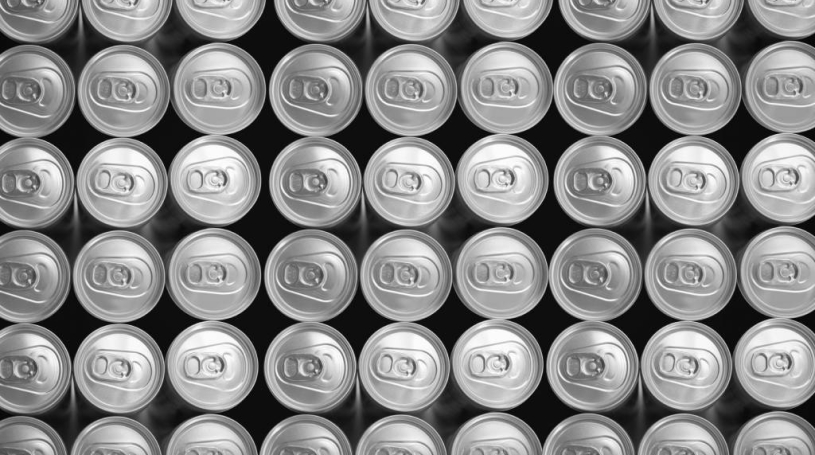Are There Plastic Liners in Your Aluminum Cans and Other Packaging?
Aluminum cans often show up in conversations about sustainability but there’s something most people don’t realize.
Beneath that recyclable metal shell is a plastic liner, typically an epoxy resin, designed to keep liquids from reacting with the aluminum, and it’s not just soft drinks. Canned wines, sparkling waters, energy drinks, and even health products all rely on this hidden layer.
For food and beverage producers—especially wine brands in Washington and Northern California—this matters more than ever. As consumer demand shifts toward transparency and sustainability, packaging is now part of the product story.
TL;DR:
Aluminum cans may look eco-friendly, but nearly all contain hidden plastic liners that complicate recycling and may leach harmful chemicals. For wine brands and conscious consumers—especially in Washington and Northern California—glass offers a safer, more sustainable alternative with no hidden tradeoffs.
Main Points:
- Most aluminum cans are lined with plastic to prevent corrosion and preserve taste.
- These liners can release microplastics and questionable chemicals like BPS and BPF.
- Plastic liners reduce recycling efficiency and increase emissions during reprocessing.
- Glass is endlessly recyclable, chemical-free, and preferred by eco-conscious Gen-Z buyers.
- Local glass bottling supports sustainability, transparency, and regional economies.
- GPI promotes glass packaging as a clean, future-proof solution for producers and consumers.
Why Are Aluminum Cans Lined with Plastic?
Acidity in wine, juice, and soda can corrode aluminum. To prevent that, manufacturers coat the inside of each can with a thin plastic film. This protects taste, prevents leaks, and extends shelf life.
But with that protection comes tradeoffs. That plastic liner—while invisible—can leach chemicals over time. BPA was once common, and while many brands have shifted to “BPA-free” liners, substitutes like BPS and BPF may carry similar health concerns.
The average person ingests over 200,000 microplastic particles every year, which can come from soda cans with plastic liners. Microplastics can be detected in our blood, lungs, liver, and our lower limb joints, and this is something that is concerning.
Whether you're a consumer asking, “do aluminum cans have a plastic liner?”, or a wine producer evaluating packaging options, the answer is yes—nearly every can does.
How It Affects Recycling
Aluminum on its own is infinitely recyclable. It’s one of the few materials that retains value in the recycling stream. But the aluminum can plastic liner complicates things.
During recycling, cans are shredded and melted at high heat. The plastic burns off, but not without cost:
- More energy is required
- Recycled aluminum may be lower in purity
- Microplastics and emissions can result from burning off the liner
According to the Environmental Protection Agency, only about 50% of aluminum cans actually make it through the full recycling process—and liners play a role in that inefficiency.
For brands marketing their products as sustainable, these drawbacks can undercut the story you’re telling your customers.
Why It Matters to Wine Brands
Wine in a can has grown in popularity, especially among Gen-Z drinkers. It’s lightweight, portable, and often seen as a greener choice than glass. But that perception breaks down when you factor in the plastic lining.
For wineries in Washington and Northern California, it’s worth reevaluating. Local glass bottlers offer a sustainable alternative—no hidden plastic, no leaching concerns, and no complications in recycling.
Glass bottles can be recycled endlessly without any loss in quality or purity, making them one of the most circular packaging materials available. Glass is inert, fully recyclable, and increasingly resonant with consumers looking for authenticity and environmental responsibility.
We See Through the Label
This generation sees through the label and doesn’t just believe that everything is fine. They want real sustainability, not marketing fluff, so if your product is wrapped in a material that pollutes behind the scenes, they’ll notice—and they’ll move on.
Glass isn’t just a container; it’s a statement. It tells your customer you’re serious about quality, health, and sustainability, and if it’s sourced from nearby, that’s even better. Glass bottles that are made locally reduce transportation emissions and strengthen your connection to the community.
Why This Matters to GPI
At the Glass Packaging Institute (GPI), we support packaging that’s both functional and future-minded. Our members include domestic glass manufacturers with facilities in regions like the Pacific Northwest and California—putting them within reach for wineries, food producers, and brands seeking local sourcing.
Whether you're bottling Pinot Noir or cold-pressed juice, glass offers a cleaner, safer path forward—no hidden liners, no chemical questions, no compromise on recyclability.
So, What Can You Do?
If you're a wine producer:
- Reassess the role of aluminum in your packaging strategy
- Talk to regional glass manufacturers about small-batch bottling options
- Highlight your use of plastic-free, locally sourced packaging in your marketing
If you're a consumer:
- Ask more questions about your packaging
- Support brands using glass, especially those prioritizing local supply chains
- Recognize that what lines the inside of your can matters as much as what’s in it
Final Thoughts
Aluminum cans may look sustainable—but they come with plastic lining and hidden costs. Whether you're a business owner in the wine industry or a consumer choosing what to drink next, the decision to avoid lined cans and opt for glass is one that benefits both your product and the planet.
Let’s move toward packaging that’s not just recyclable, but truly sustainable. And let’s do it together—locally, transparently, and without plastic.


